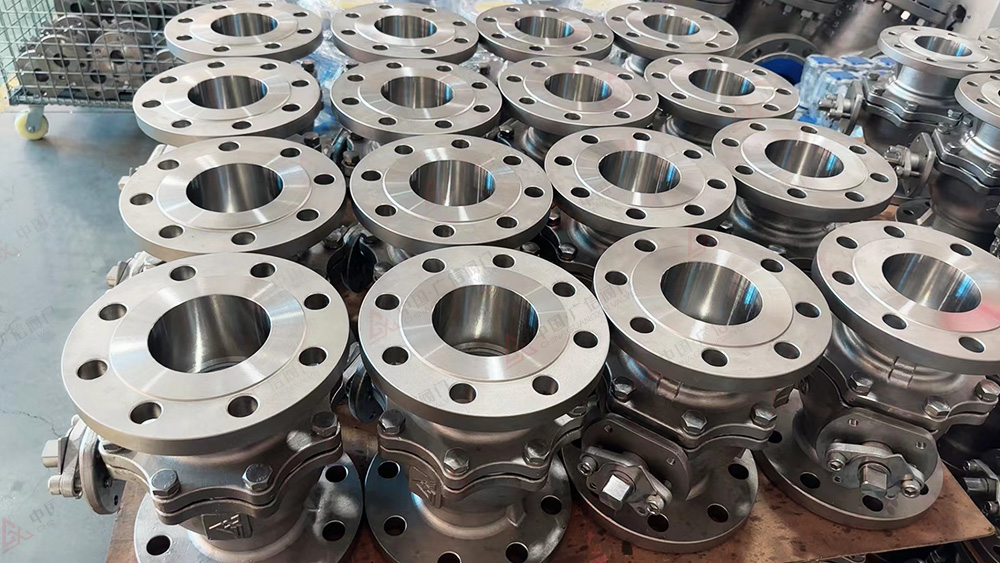

The working principle of a ball valve is to rotate the ball to make the valve unobstructed or blocked. Ball valves are lightweight, small in size, and can be made into large diameters. They are reliable in sealing, have a simple structure, and are easy to maintain. The sealing surface and spherical surface are often in a closed state, and are not easily eroded by media. They are widely used in various industries.
Ball valves can be roughly divided into 19 categories, including floating ball valves, fixed ball valves, metal hard sealed ball valves, V-shaped ball valves, clamp type ball valves, insulated ball valves, pipeline ball valves, track ball valves, top mounted ball valves, cleaning valves, high-pressure forged ball valves, three-way (four-way) ball valves, internal threaded ball valves, integral ball valves, low-temperature ball valves, corrugated pipe ball valves, eccentric hemisphere valves, fully welded ball valves, special ball valves, etc.
The O-shaped ball valve adopts a floating structure, with a precision casting core and a hard chrome plated surface. The valve seat is made of metal or reinforced polytetrafluoroethylene material, and the flow port is the same as the pipeline diameter. It has great flow capacity, minimal flow resistance, and no leakage when closed. It is generally used as an on/off valve, especially suitable for high viscosity, fiber containing, and granular media.
The V-shaped ball valve adopts a fixed structure, with a V-shaped notch on the core, which can achieve proportional adjustment, and the flow characteristics are approximately equal in percentage.
Ball valves have a wide range of applications, including:
1. The nominal diameter ranges from 8mm to 1200mm.
2. The nominal pressure ranges from vacuum to 42MPa.
3. The working temperature ranges from -204 ℃ to 815 ℃.
Especially in departments such as petroleum, chemical, and metallurgy, when using soft sealed ball valves in equipment and pipeline systems with flammable and explosive media, attention should be paid to fire resistance and prevention.
Usually, in pipeline systems with dual position adjustment, strict sealing performance, mud, wear, contraction channels, rapid opening and closing action (1/4 turn opening and closing), high pressure cutoff (large pressure difference), low noise, air pockets and gasification phenomena, small leakage to the atmosphere, low operating torque, and low fluid resistance, it is recommended to use ball valves.
Ball valves are also suitable for pipeline systems with lightweight structures, low pressure cutoff (small pressure difference), and corrosive media.
Ball valves can also be used in low-temperature (cryogenic) equipment and piping systems.
When requiring adjustable performance, a specialized ball valve with a V-shaped opening should be selected.
In petroleum, petrochemical, chemical, power, and urban construction, metal to metal sealed ball valves can be selected for pipeline systems with operating temperatures above 200 ℃.
In the oxygen pipeline system of the metallurgical industry, ball valves that have undergone strict degreasing treatment are required.
When the main pipeline in oil and gas pipelines needs to be buried underground, full bore welded ball valves should be used.
Principles for selecting ball valves:
1. For oil and natural gas transmission pipelines that require cleaning and need to be buried underground, full bore, fully welded ball valves should be selected; For buried on the ground, choose ball valves with full bore welding connection or flange connection; Branch pipes, using flange connection, welding connection, full bore or reduced diameter ball valves.
2. The transportation pipeline and storage equipment for finished oil shall be equipped with flange connected ball valves.
3. Floating ball valves with flange and internal thread connections are selected for urban gas and natural gas pipelines.
4. In the oxygen pipeline system of metallurgical systems, it is advisable to use fixed ball valves that have undergone strict degreasing treatment and are connected by flanges.
5. Low temperature ball valves with valve covers should be selected for pipeline systems and devices with low-temperature media.
6. The lifting rod ball valve can be selected for the pipeline system of the catalytic cracking unit in the refining unit.
7. In the devices and pipeline systems of corrosive media such as acid and alkali in chemical systems, it is advisable to use all stainless steel ball valves made of austenitic stainless steel with polytetrafluoroethylene as the seat sealing ring.
8. Metal to metal sealed ball valves can be used in pipeline systems or devices for high-temperature media in metallurgical systems, power systems, petrochemical plants, and urban heating systems.









